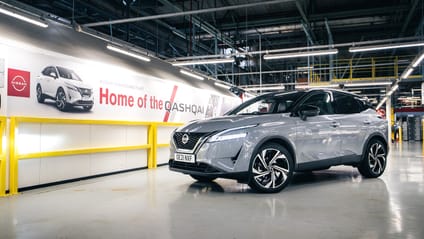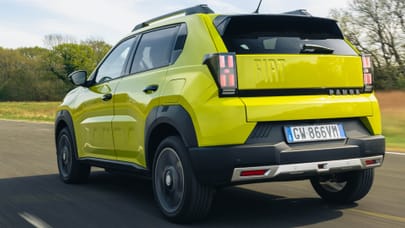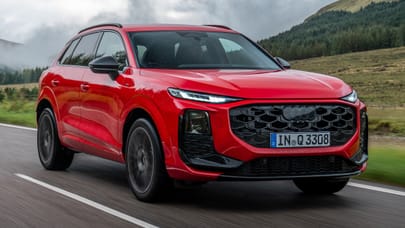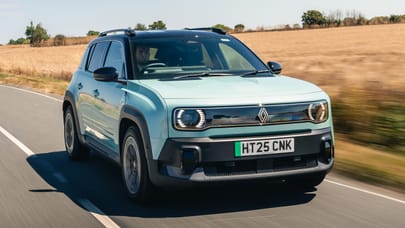
The beginner’s guide to Nissan Sunderland
The UK’s most productive car factory is frequently in the news. Here’s your FAQ on it

When did Nissan Sunderland open?

Nissan decided to open a plant in the UK at the beginning of 1984, and by November construction work had started on the former site of Sunderland Airfield. Located close to the river Wear – and a short journey from the Port of Tyne, from where most of its produce would be distributed to the wider world – it felt rather symbolic that an area ravaged by shipyard closures had a new, quite vital source of employment close to where the clinking-clanking of industry had so recently been. Car production started at ‘Nissan Motor Manufacturing UK’ in 1986, and the first Nissan Bluebird to roll off the line now sits in Sunderland Museum. Beside a stuffed lion called Wallace, naturally.
Advertisement - Page continues belowHow big is Nissan Sunderland?

Good question, and one whose answer may date quickly. This is an ever-growing facility, so while its success is vulnerable to changing conditions (not everything can resist a global pandemic), the messy aftermath of Brexit has actually seen – against expectation – investment into the plant from both Nissan and the UK government for a new battery production line. The plant currently stands at around 362,000 square metres. In simple terms, that’s the equivalent of around 50 pitches on which the local football team could disappoint its fans upon.
How many people does Nissan Sunderland employ?

The factory directly employs around 6,000 people, though include the wider supply chain (which feeds components to the plant and cleans it during shutdowns) and you soar past 30,000 north-east folk who can attribute their salary to Nissan’s presence in the region. Small wonder it’s become so politicised in recent years – a region bereft of its coalmining and shipbuilding industries is really rather reliant on its now famous ability to crank out a phenomenal quantity of crossovers each year. Nissan also has British design and engineering centres – in London and Cranfield respectively – adding another 860 workers to the mix.
Advertisement - Page continues belowHow many cars does Nissan Sunderland build?

Since 1986, the factory has produced over 10 million cars. At the moment you’re looking at around 500,000 cars a year being pumped out the end of its production lines – or roughly two every single minute. The vast majority are exported outside of the UK, roughly 20 per cent being snapped up by British buyers. The other 80 per cent head off to 132 different markets…
Which cars has it built in the past?

Looking at the history of Nissan Sunderland is like a short case study in how the shapes of the car world have changed in the last 30-odd years. While it started making just the Bluebird - the very definition of ‘three-box saloon’ should you have ever wondered - it was soon cranking out the Micra, Almera and Primera, together a very Nineties triple threat of supermini, family hatch and rep car. But by the mid 2000s the Almera and Primera were ditched in favour of the Note (a mini MPV, should you remember those) and something called the ‘Qashqai’. More on that shortly. Sunderland also briefly made Infiniti Q30s and QX30s, and indeed the Wearside staff car park appears to be the only place such objects still inhabit.
Which cars does it build now?

Remember that ‘Qashqai’ thing we discussed? Launched in 2007, it arrived as a product fed by all of Nissan’s UK facilities – a car designed, engineered and built for modern European folk looking to pogo out of exactly the kind of staid, unimaginitive hatchback the Almera was basically the zenith of. And thus the crossover trend boomed; the smaller Juke followed, and now Nissan makes both small SUVs in vast number alongside the Leaf electric car, as well as the batteries it swallows up.
What does the future hold?

The future holds good things. Namely another 6,200 jobs between the factory and supply chain and a fairly bamboozling one billion pounds of investment. That’s because Nissan has joined forces with battery company Envision AESC and Sunderland City Council for its ‘Nissan EV36Zero’ project that’ll see not only a new, fully electric car pumped out of the Wearside factory, but a whole battery gigafactory and solar farms to help it run cleanly.
Advertisement - Page continues belowWoohoo! What does that mean?

Expect around 100,000 batteries a year and a crossover-y EV that’ll swallow many of those into its belly. There’s a bit of chicken and egg to this: without a battery plant next door, the new model wouldn’t have the percentage of UK-made content needed to see it jink through Brexit trade agreements to avoid high tariffs to land on EU shores. Nissan didn’t really want Britain to leave the EU, but at least it’s found a solution now it has…
Tell me an interesting fact about Nissan Sunderland.

You can get a cup of Bovril from the staff vending machines. Which, dear readers in countries where Bovril doesn’t have a stronghold in the hot beverage market, is “a thick and salty meat extract paste”. Refreshing. Craving an actual manufacturing stat? Well, whatever your definition of ‘functional car factory’, the UK has at least 20 facilities pumping homegrown cars out into the world. Yet the humble Qashqai accounts for one in five cars currently made on our Isles (not to mention over a third of all Nissans ever made on Wearside). Crikey.
Advertisement - Page continues below
Trending this week
- Car Review
BMW 1 Series
- Top Gear's Top 9
Nine dreadful bits of 'homeware' made by carmakers







